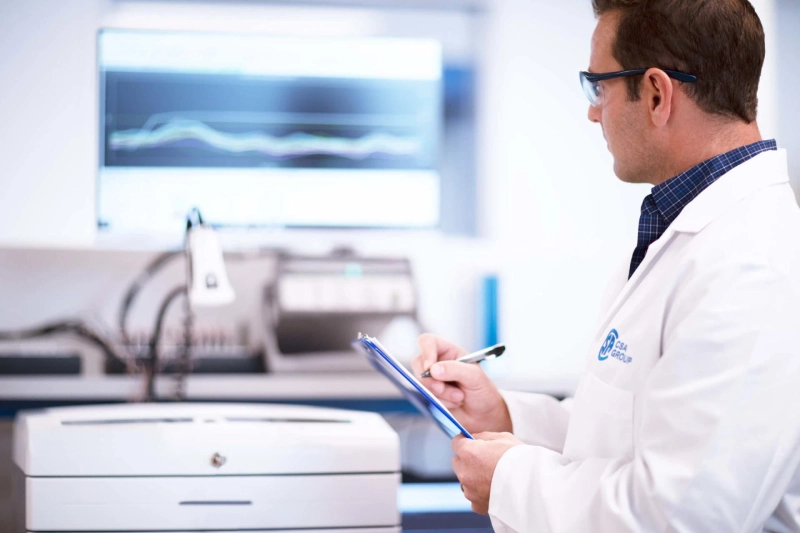Did you ever look at the back of a power brick and see a bunch of confusing markings? You probably recognize these markings on your devices, which are likely familiar. They must be very important if they are so common.
Many of them are required. These markings protect you, your community, and the surrounding environment from any danger, from electromagnetism to poisonous chemicals.
Below are seven common product labels found in electronic appliances and other devices.
1. European Conformity (CE)
Conformite Europeenne (or European Conformity) is a label found on almost any electrical or electronic product. Contrary to popular belief, the CE label is not a certification and does not guarantee a product's safety or quality.
The European Union Committee requires manufacturers to display conformity to allow their products to be accepted on the European market. Conformity means that the manufacturer has tested and deemed their products safe for the environment and community.
CE marks are self-declared. This means that manufacturers can't monitor or check if their products have been tested and assessed. The manufacturer is responsible for declaring their products safe and not hazardous.
However, CE marked devices offer some protection. If a CE-marked product causes injury to any person, community, or environment, governing bodies and those affected can sue the manufacturer if they fail to provide evidence of their testing or assessments.
2. Underwriters Laboratories (UL)
OSHA (Occupational Safety and Health Administration) has approved Underwriters Laboratories to test and approve different products from manufacturers. Underwriters Laboratories offers testing and assessments for material, packaging, and microbiological properties. An OSHA-approved testing organization like UL must test all products circulating on the US market. The UL marking on yields indicates that they were approved and tested by Underwriters Laboratories. The UL Mark means that a product is safe and durable in the areas it has been tested.
UL marks can be found on many products, including electrical supplies, electronic devices, building supplies, industrial control equipment, plastics, and wiring devices.
3. Canada Standards Association (CSA)
Another product safety mark, the CSA, concerns electromagnetic and electrical compatibility.
OSHA-approved organization CSA allows manufacturers to get their products certified. The CSA marking is not mandatory for manufacturers. They must still have the certification for their products to be allowed to circulate on the market.
4. Restriction of Hazardous Substance Directives (RoHS)
This label assures that a product is free from hazardous substances like lead, mercury, Cadmium Hexavalent Chromium, Polybrominated Biphenyl, Polybrominated Diphenyl Ether (PBDE), and five others. These products cannot be made without the listed substances. This directive does not apply to essential products.
RoHS Directive primarily targets electrical and electronic products, such as lighting, equipment, networking devices, household appliances, and medical devices.
Manufacturers have many ways to indicate their RoHS compliance, as there is no standard logo. RoHS-compliant products can be identified by various markings, such as check marks, green leaves, and check marks.
5. Waste from Electrical and Electronic Equipment (WEEE)
The RoHS directive is designed to limit the use of hazardous materials in electronic and electrical products. However, the WEEE directive regulates the proper disposal of these products.
Products with the "Wheelie Bin," a cross-out garbage bin logo, indicate compliance with the WEEE directive. WEEE compliance would suggest that a producer/manufacturer practice and offer proper electrical and electronic waste management to the end-users. Producers must also report on the appropriate disposal of their waste annually. Consumers can also assist with this directive by recycling products that have been marked with the crossed-out garbage bin.
International markets require WEEE compliance. That is why almost all electronic and electrical products sold on the market have a CE, UL, or CSA mark.
6. Federal Communications Commission (FCC).
Federal Communications Commission enforces the FCC mark as a mandatory label. The FCC mark does not necessarily indicate that a product is durable or safe. The FCC mark does not mean that the product is safe or stable. It simply means that it has met certain radiation limits. Some parts of the product may still be dangerous.
All radio frequency emitting devices that use radio frequency, such as mobile phones, devices used in smart houses, Bluetooth devices, and radio telecommunications equipment, must have the FCC mark.
7. Double-insulated Electrical Appliance
A symbol that contains a square within a square signifies that an electrical appliance has been evaluated by a PAT (Portable Appliance Testing) engineer/personnel. This logo signifies that an electrical appliance has been double-insulated and does not require ground connections.
Other Product Safety Certifications-
ISO 13485 certificationUKCA CertificationFDA certification for medical devices
What is stopping manufacturers from faking product labels?
These labels can take time and money before they can be stamped on products. Now, this isn't a problem for bigger manufacturers/producers, but how about the small ones? They can't directly print these markings and not get certifications.
The risk of litigation aside, it is not that significant.
Smaller manufacturers don't have to fake product safety labels. This is a good thing. They can still reach large markets using CE self-certifying labels. They can skip the labels, as most of them don't have to be. Although there are fake labels in the electrical and electronic market, it is possible to buy from reputable brands.
Be Smarter: Shop for Labelled Products
You now have a basic understanding of the labels used in electrical and electronic appliances. Now, it is time to start looking for them. To create a safe, secure, and sustainable world, entire committees were created to assess and enforce standards. It would be a shame to let all this effort go to waste. Before buying a new device, ensure it has a product safety label.


